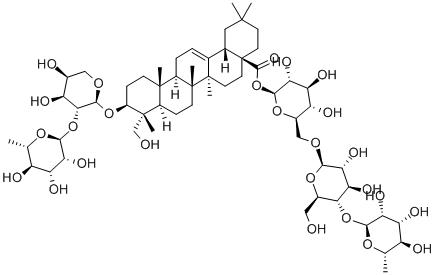Wuboot rattan, a traditional Chinese medicine, may be expected to treat diabetes
-
Last Update: 2011-10-31
-
Source: Internet
-
Author: User
Search more information of high quality chemicals, good prices and reliable suppliers, visit
www.echemi.com
Wuboot rattan, also known as jinnette, claw rattan and King Kong rattan, is a kind of lush climbing plant, which grows mostly in the tropical forests of central India and Southeast Asia, and is also distributed in Guangxi, Guangdong, Fujian, Taiwan and other provinces and regions of China The flowering period is from May to September, and the fruiting period is from October to January of the next year In the past, the traditional medicine used by Indian doctors has been bootleg, whose leaves are often used to treat slight stomach pain, constipation and liver disease, and its extract is also used to treat diabetes In Hindi, wuboot rattan is gurmar, which means "the destroyer of sugar" This is because the leaves of wuboot rattan can disturb the sweet feeling and make the sweet food taste bitter Although no authoritative scientific research has been confirmed, long-term use can reduce the desire for sweet food According to relevant reports in India, wuboot can not only reduce blood sugar, but also help repair damaged cells in the pancreas and improve insulin secretion In recent years, it has been found that there are many different carbohydrate compounds in wuboot Its derivatives can increase the effect of insulin, reduce the need of insulin, and control the fasting blood glucose concentration Wuboot acid is the main active component in lowering blood glucose, with the content of 3.9% - 9.6% Blood glucose was measured by GOD-PAP method in alloxan diabetic model The results showed that wuboot Teng acid significantly reduced blood glucose in diabetic model mice The hypoglycemic effect of wubooteng compound granules (including wubooteng, hawthorn and silkworm chrysalis) on experimental diabetic mice model induced by alloxan was observed through the determination of blood glucose The results showed that it had obvious hypoglycemic effect on experimental diabetic mice Wubooteng compound granule is effective on experimental diabetic mice, which shows that the main mechanism of hypoglycemia is through the protection of islet β cells and promoting the recovery and regeneration of islet β cells Singapore Yongjian group applied it to diabetes earlier and made special tea with Wuteng boots This tea is rich in many paste, flavonoids, anthraquinone and other compounds It can not only reduce the use of antidiabetic drugs, but also has certain effect on complications for patients who are taking antidiabetic drugs.
This article is an English version of an article which is originally in the Chinese language on echemi.com and is provided for information purposes only.
This website makes no representation or warranty of any kind, either expressed or implied, as to the accuracy, completeness ownership or reliability of
the article or any translations thereof. If you have any concerns or complaints relating to the article, please send an email, providing a detailed
description of the concern or complaint, to
service@echemi.com. A staff member will contact you within 5 working days. Once verified, infringing content
will be removed immediately.







